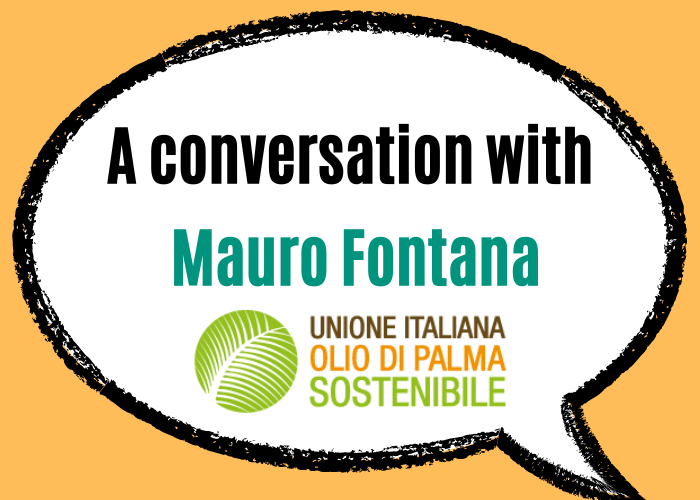Demystifying palm oil: a conversation with Mauro Fontana
- 13 June 2022
- Posted by: Competere
- Categories: News, SUSTAINABLE NUTRITION

What follows is a short Q&A with Mauro Fontana, President of the Italian Union for Sustainable Palm Oil, as excerpted from an article published on the newspaper Italia a Tavola
What does the chemical composition of palm oil look like?
The percentage of saturated fatty acids contained in palm oil is around 50% (with a distinct prevalence of palmitic acid), with the remaining 50% accounted for by unsaturated fatty acids, with a prevalence of monounsaturated oleic acid, the same of olive oil. Although olive oil is rightly appreciated for its low concentration of saturated fat, it is important consider that olive oil is the second-highest source of saturated fat in the Italian diet, given its high consumption per head, as is also indicated in the Studies on food consumption in Italy, 2005-2006 conducted by CREA. The article also highlights the fact that olive oil is rich in tocopherol antioxidants, precursors to vitamin E. In this regard, it is worth pointing out that palm oil also contains these important antioxidants, as highlighted by the Italian National Institute of Health:
“In addition to fatty acids, crude palm oil contains elements such as vitamin E, especially in the form of tocotrienols (up to 500 mg/Kg of crude palm oil) and alpha tocopherols (150-200 mg/Kg), carotenoids (500- 2000 mg/Kg), and phytosterols (40-90 mg/100g). Some methods used for refining palm oil for industrial uses result in a 40% reduction in vitamin E content and in most of the carotenoids (Gibon V et al, 2007).”
Furthermore, while oils with low smoke points are preferable for raw consumption, palm oil, which has the highest smoke point, is ideal for frying.
Is sustainable palm oil consumption good for the planet?
A great deal of progress has been made in recent years in the development of the sustainable palm oil supply chain, which for a number of reasons offers the best – indeed the only real – alternative to palm oil, and is a key resource for achieving the Sustainable Development Goals (SDGs)Over 95% of the palm oil currently used in the food industry comes from sustainable supply chains certified by independent bodies in keeping with the most authoritative international standards (RSPO).
